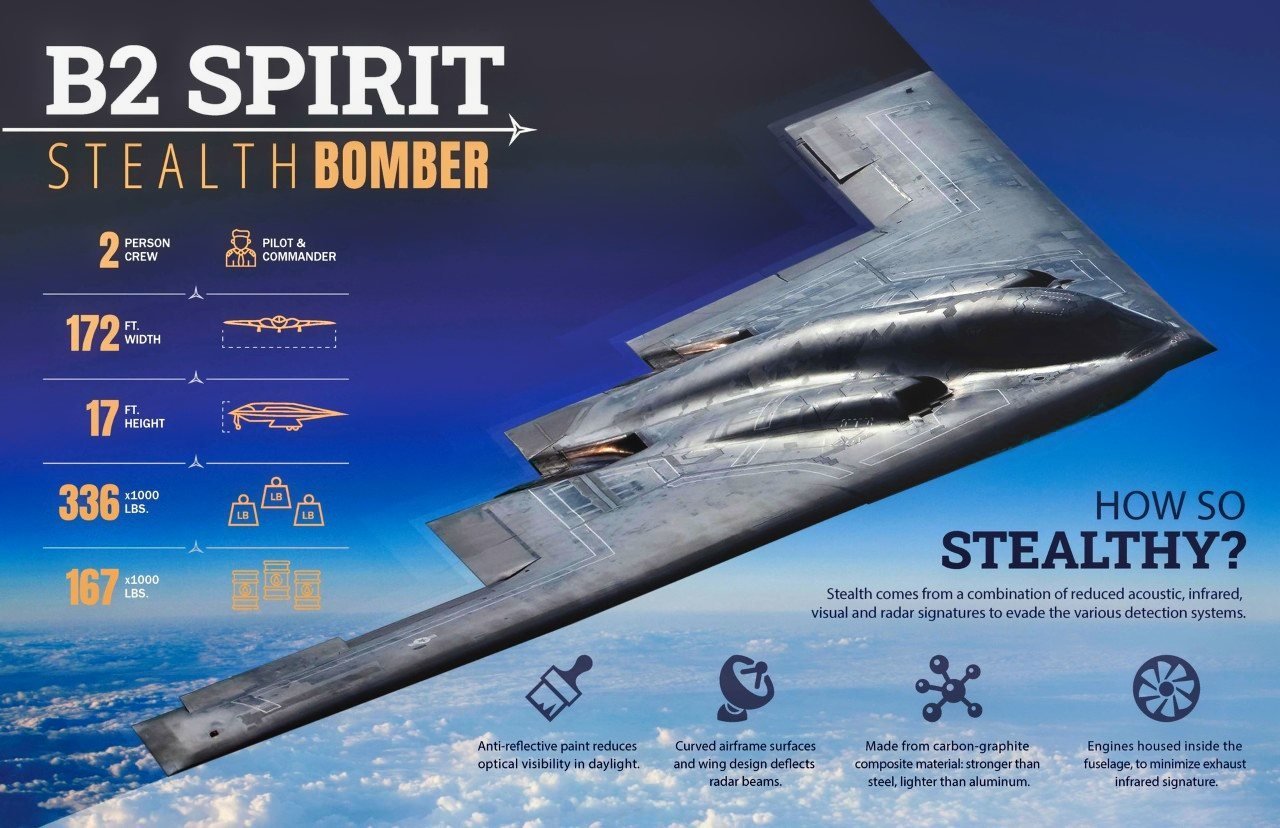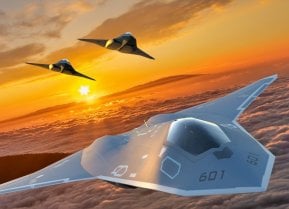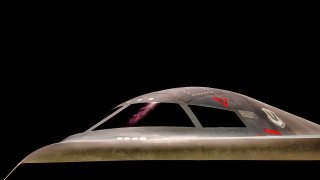The B-2 Spirit Bomber Is the Most Expensive Aircraft Ever
Despite initial plans for 132 units, budget cuts reduced production to 21 B-2 Spirit bomber aircraft, each costing $737 million. However, when one factors in research and development spread out over such a small amount of stealth bombers, the total cost per plane hits $1.4 billion.
Summary: The B-2 Spirit, recognized as the first successful "flying wing" aircraft, has redefined military aviation with its advanced stealth capabilities. By integrating reduced infrared, acoustic, electromagnetic, visual, and radar signatures, the B-2 can penetrate sophisticated enemy defenses, posing a formidable threat to protected targets. Developed during the Cold War, its inception in 1988 and first flight in 1989 marked a significant leap in aerial warfare technology. Despite initial plans for 132 units, budget cuts reduced production to 21 aircraft, each costing $737 million, with overall project expenses ballooning the actual cost to $1.4 billion per plane when one factors in research and development. This experience has informed strategies to manage costs for its successor, the B-21 Raider, focusing on mature technology and efficient production methods to ensure affordability while maintaining technological superiority.
The B-2 Spirit: Revolutionizing Stealth Technology and Impacting Future Airforce Strategy
There are reports that it could cost at least $400 million to replace the Francis Scott Key Bridge in Baltimore following last week's tragic collapse that resulted in the death of four Maryland highway workers. Rebuilding the bridge, a vital link on the East Coast, could take five to seven years and there are even concerns that the project could double in cost.
The destruction of the bridge, which was struck by a cargo vessel departing the Port of Baltimore last Tuesday, has led the evening news and remained a top headline. Given the loss of life and impact on the country's economy that fact is understandable.
Yet, taxpayers barely were told – and few likely remember – a far more costly incident that occurred back in 2008 when the United States Air Force Northrop Grumman B-2 Spirit nicknamed "Spirit of Kansas" crashed at Whiteman Air Force Base (AFB), Missouri, following a deployment to Guam. It was the most costly accident in the history of the air service, and the most expensive plane crash ever.
The aircraft was destroyed and the total loss was estimated to be $1.4 billion!
Costly B-2 Bomber
Seen as the first successful "flying wing" aircraft, the B-2s low-observable, or "stealth," characteristics have provided it the unique ability to penetrate an enemy's most sophisticated defenses and threaten its most valued, and heavily defended, targets. The Spirit's capability to penetrate air defenses and threaten effective retaliation further has provided a strong, effective deterrent and combat force well into the 21st century.
The B-2's low observability was derived from a combination of reduced infrared, acoustic, electromagnetic, visual, and radar signatures. These signatures make it difficult for the sophisticated defensive systems to detect, track, and engage the B-2. Many aspects of the low-observability process remain classified; however, the B-2's composite materials, special coatings, and flying-wing design all contribute to its "stealthiness."
Its low-observability (LO) further provided it greater freedom of action at high altitudes, thus increasing its range and a better field of view for the aircraft's sensors.
The first B-2 rolled out of the bomber's final assembly facility in Palmdale, Calif., in November 1988 and it flew for the first time on July 17, 1989. Originally, the Air Force had plans for 132 B-2 Spirits, but as the aircraft was a product of the Cold War, it was originally designed to penetrate Soviet air defenses. Congress slashed the budget for the Spirit, which cut production to just 21 aircraft.

As a result, in addition to the costs to build each of the aircraft – at a reported $737 million per plane – the R&D costs were spread over far fewer units, resulting in the $1.4 billion price tag.
As BulgarianMilitary.com reported last month if the aircraft were produced today, just two B-2 bombers would equal NATO member Portugal's entire defense budget, while one bomber would have the same price tag as Slovakia's defense expenditure.
B-21 Raider Will Better Manage Costs
To ensure that the now-in-development B-21 Raider doesn't also arrive with a sky-high price, Air Force officials have further emphasized a focus on containing costs while simultaneously allowing for maximum flexibility.
The B-21 has been noted for being designed with an open systems architecture that would enable rapid future capability integration to keep pace with the highly contested threat environment. In addition, Raider’s design is based on firm requirements with existing and mature technology to control program costs. In fact, the plane's prime contractor, Northrop Grumman, has been directed to use production processes, production tooling, and a production workforce that ensures sustained and seamless production while avoiding unnecessary costs.
Author Experience and Expertise: Peter Suciu
Peter Suciu is a Michigan-based writer. He has contributed to more than four dozen magazines, newspapers, and websites with over 3,200 published pieces over a twenty-year career in journalism. He regularly writes about military hardware, firearms history, cybersecurity, politics, and international affairs. Peter is also a Contributing Writer for Forbes and Clearance Jobs. You can follow him on Twitter: @PeterSuciu. You can email the author: [email protected].
Image Credit: Shutterstock.


